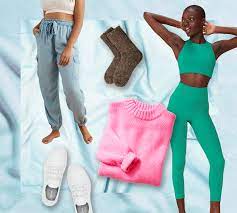
Comfortable clothes are not merely a luxury but a necessity in our fast-paced lives. In a world where every minute counts and demands compete for attention, the significance of comfort cannot be overstated. From loungewear to activewear, the quest for comfortable clothing has evolved into a science that merges functionality with fashion. But what exactly makes clothes comfortable? Let’s delve into the intricacies of comfort, exploring both the physical and psychological dimensions that influence our clothing choices.
The Physiology of Comfort
Comfortable clothes go beyond aesthetics; they cater to our physiological needs. Fabrics play a pivotal role here. Natural fibers like cotton, linen, and silk are favored for their breathability and softness, allowing the skin to breathe and reducing the risk of irritation. Conversely, synthetic fabrics such as polyester and nylon offer durability and moisture-wicking properties, making them ideal for activewear.
The fit of clothing is crucial. Garments that are too tight restrict movement and can cause discomfort, while excessively loose clothing may feel cumbersome. The perfect fit varies from person to person, influenced by factors like body shape and personal preference. Tailoring and innovative sizing options have empowered individuals to find clothing that not only fits but also enhances comfort.
Psychological Comfort
Beyond physical sensations, psychological comfort significantly impacts our clothing choices. Colors, textures, and styles evoke emotions and perceptions that influence how we feel. For instance, soft, pastel hues may evoke feelings of tranquility, while bold patterns can exude confidence.
Additionally, cultural and societal norms shape our perceptions of comfort. In some cultures, loose, flowing garments are synonymous with relaxation and modesty, while in others, form-fitting attire symbolizes sophistication. Understanding these nuances helps designers create culturally relevant clothing that resonates with diverse audiences.
The Role of Technology
Advancements in textile technology have revolutionized the comfort landscape. Innovations like moisture-wicking fabrics, seamless construction, and temperature-regulating materials have elevated the comfort quotient of clothing. For athletes and outdoor enthusiasts, performance-enhancing features such as UV protection and odor control are indispensable.
Wearable technology has emerged as a game-changer in the quest for comfort. From smart fabrics that adjust to body temperature to garments embedded with biometric sensors, these innovations cater to individual needs, providing personalized comfort experiences.
The Future of Comfort
As we embrace the era of smart textiles and sustainable fashion, the future of comfortable clothing looks promising. Biodegradable fabrics, 3D-printed garments tailored to individual measurements, and virtual fitting rooms are just a glimpse of what’s to come. Moreover, inclusive design practices that prioritize accessibility and diversity will ensure that comfortable clothing is accessible to all.
Conclusion
Comfortable clothes are more than just attire; they are a reflection of our lifestyle, preferences, and values. By understanding the intricate interplay between physiology, psychology, and technology, designers can create clothing that not only looks good but also feels right. As we continue to prioritize comfort in our daily lives, the evolution of clothing will undoubtedly transcend mere fashion, catering to our holistic well-being. So, the next time you slip